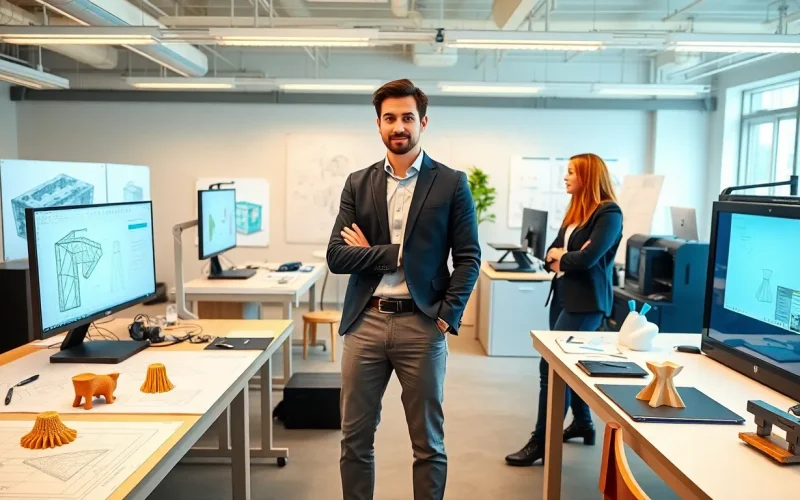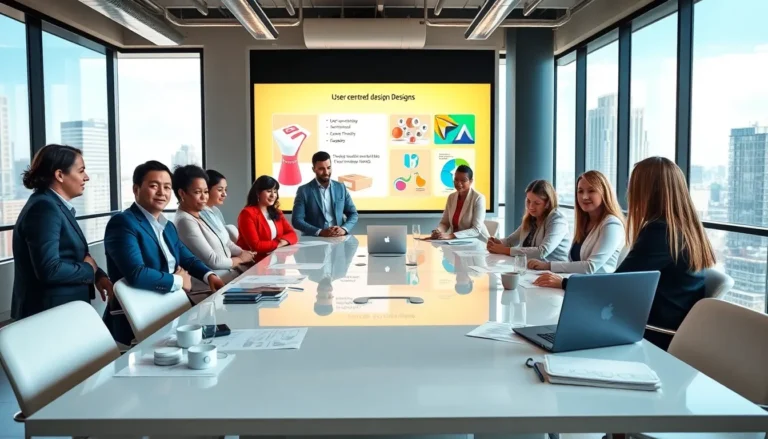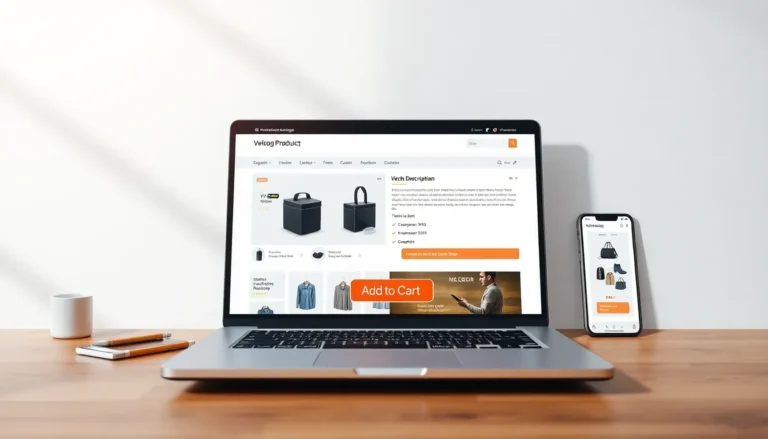Table of Contents
ToggleEver tried to assemble IKEA furniture without the instructions? That’s a bit like product design engineering, without the right engineering, creating innovative, user-friendly products can quickly turn into chaos. This field embodies the art and science of crafting functional yet aesthetically pleasing products that fulfill a market need. A good product designer doesn’t just know how to sketch: they weave together creativity, functionality, and technical know-how. Let’s dive deep into this intriguing realm of product design engineering, where every detail matters.
Overview of Product Design Engineering

Product design engineering melds both creativity and technical skills to create products that are not only visually appealing but also functional and user-friendly. At its core, this discipline focuses on finding a balance between user needs and technological capabilities. Designers in this field are typically involved from the initial concept stage right through to production, ensuring the end product meets both quality and market demands. They work collaboratively in multidisciplinary teams, employing principles of engineering, design, and marketing to bring their visions to life.
Key Principles of Product Design
Understanding the key principles of product design is essential for creating effective products. Here are several critical elements:
User-Centered Design
Designers place the user at the forefront of their work, ensuring that products meet genuine needs and provide a seamless experience.
Functionality
A product must work efficiently and effectively. It’s not just about looks: a beautiful design that doesn’t perform is a recipe for failure.
Aesthetics
While functionality reigns supreme, the visual appeal of a product can’t be overlooked. Attractive designs help capture attention and encourage user engagement.
Sustainability
In today’s world, environmentally friendly practices are vital. Designers aim to create products using materials and processes that minimize environmental impact.
Innovativeness
Creativity drives the design process, encouraging designers to explore new ideas and technologies to stand out in a crowded market.
The Product Design Process
The product design process can be boiled down into several structured phases.
Ideation
This initial stage focuses on brainstorming ideas. Designers sketch concepts, discuss possibilities, and use tools like mind mapping to visualize and refine their ideas.
Prototyping
Once ideas are solidified, prototypes are built. These can range from rough models to detailed simulations, offering an early glimpse of the final product.
Testing
Prototypes undergo rigorous testing to ensure they meet usability standards and quality expectations. Feedback from real users is invaluable in this phase.
Final Design
After iterating on designs based on feedback, the final version is prepared for production. This is where engineers finalize technical specifications and collaborate closely with manufacturing teams.
Tools and Technologies in Product Design
Modern product design engineering relies on an array of specialized tools and technologies.
CAD Software
Computer-Aided Design (CAD) software helps designers create digital representations of their ideas. Tools like SolidWorks and AutoCAD are common choices for intricate designs and engineering specifications.
3D Printing
This technology allows for rapid prototyping and manufacturing. Designers can create real-world models that are easy to test and evaluate.
Simulation Software
These tools enable designers to test how their designs will perform under various conditions, helping to optimize functionality before the physical product is made.
Collaboration Platforms
Tools like Slack and Trello help communication among team members. Effective collaboration is crucial for successful product development.
Challenges in Product Design Engineering
While designing innovative products is thrilling, it does come with its share of challenges.
Balancing Innovation and Practicality
Striking a balance between fresh, creative ideas and practical functionality can be tough. Sometimes, the most innovative concepts may not be feasible to produce.
Cost Constraints
Budget limitations can restrict material choices and manufacturing processes, leading to compromises in design.
Time Management
Deadlines are a reality in the design world. Designers must manage their time effectively to ensure timely delivery without sacrificing quality.
User Feedback
Incorporating user feedback can be tricky: feedback is crucial for success but can also lead to conflicting opinions, making it essential to prioritize actionable insights.
Future Trends in Product Design Engineering
The future of product design engineering is driven by emerging trends and technologies.
Artificial Intelligence
AI can enhance design capabilities by analyzing user data to suggest improvements and generate design options, making the process more efficient.
Virtual Reality (VR)
VR allows designers to immerse themselves in their projects, offering new perspectives and creative possibilities before physical prototypes are made.
Sustainable Design
As concerns about the environment grow, sustainable practices will become even more crucial. This trend includes using recyclable materials and emphasizing energy-efficient manufacturing methods.
Customization
With advancements in production technologies, personalized products can increase user satisfaction and build brand loyalty. Designers will need to explore ways to carry out customization at scale.





